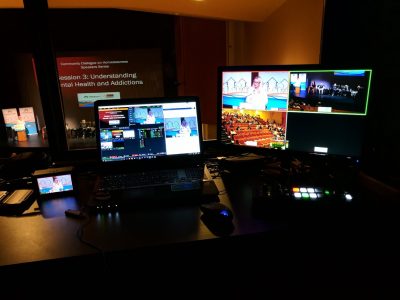Deluxe and their HDR Workflow
By Jim Bask
Earlier this fall, Netflix summoned an array of technology journalists to New York to teach them about high dynamic range (HDR) technology, using the OTT operator’s range of Marvel superhero shows as a guide. The still-forthcoming Iron Fist is Netflix’s first Dolby Vision original show — that is, cinematographer Manuel Billeter is conceiving it for HDR from square one, rather than having it regraded after the SDR version has already been completed. But the case study for post-production was Daredevil, which was regraded for HDR by colorist Tony D’Amore at Deluxe’s L.A. facility. With reporters assembled in a grading suite at Deluxe in New York, D’Amore called in via telephone and oversaw a remote-grading session, controlling the New York office’s Da Vinci Resolve software from the other coast and explaining the Dolby Vision process.

(Deluxe’s claim to HDR fame? The company has worked on more than 100 HDR titles — including, in its New York office, season 2 of Netflix’s Marco Polo, which it says was the first-ever Dolby Vision show.)
D’Amore described Dolby’s crucial “content mapping” software, which analyzes the image to create metadata that will allow the image to appear correctly on playback, with brightness levels re-mapped to match the specific capabilities of any Dolby Vision-equipped display. The standard display used by Deluxe for HDR grading is the Dolby Pulsar monitor, which is a 4,000-nit display that far outstrips consumer monitor capabilities. (One nit = 1 candela per square meter.) Even so, it doesn’t come close to maxing out the HDR spec, which supports up to 10,000 nits. For comparison’s sake, Deluxe colorist Martin Zeichner said the Rec. 709 spec allows for 100 nits of peak brightness, while laser projectors in a theatrical setting can reach up to about 1,600 nits. The trick is generating metadata that will allow the image to be generated correctly under a range of varying viewing conditions.
“We’re protected for the future — just in case somebody does one day have a 4,000 nit TV, we’re grading all the way up to it,” D’Amore noted. “Even if you have a 600 nit TV, the mapping pushes the limits of the set you’re watching on…. For the most part, anything above 500 nits is going to be really impressive.”

